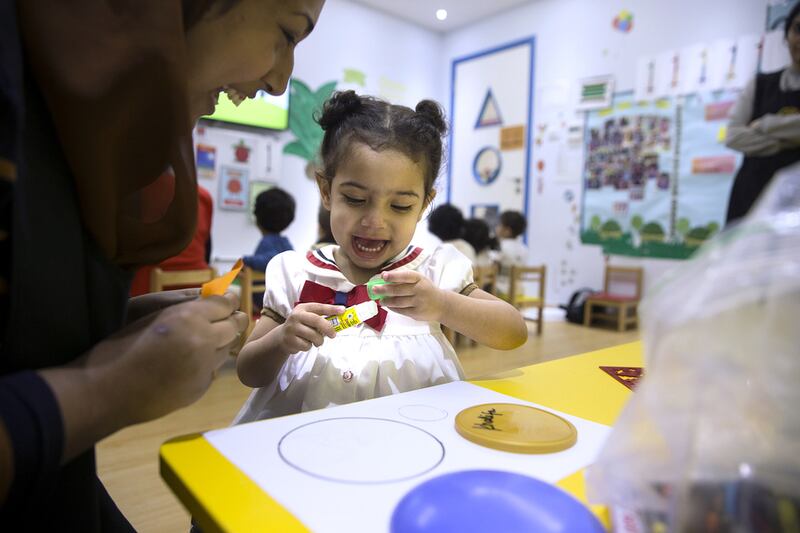In September 2015, the leaders of all 193 member countries of the United Nations made a milestone pledge to end the preventable deaths of women and children by 2030. It was both a moral and strategic breakthrough – as healthy mothers and children lead to healthy societies – but the 2030 goal also crystallised the urgency that drove the launch of our initiative, Every Woman Every Child EveryWhere, just over a year ago in Abu Dhabi.
There is an alarming and historically unacknowledged reality about where vulnerable mothers and children are located. Some 60 per cent of preventable maternal deaths, 53 per cent of child deaths and 45 per cent of newborn deaths occur in areas of conflict, displacement and natural disasters. Shockingly, women and children are up to 14 times more likely than men to die in a disaster, and gender-based violence is vastly higher in these settings.
If we are serious about achieving the 2030 goal, then the challenge is clear: we need to reach mothers and children even in the worst settings – from war-torn Syria to the cyclone-ravaged Pacific islands. We cannot limit ourselves to where governments function and access is uncomplicated; we must strive to go everywhere.
No one is under the illusion that this will be easy. However, with the patronage of Her Highness Sheikha Fatima bint Mubarak, Chairwoman of the General Women’s Union, President of the Supreme Council for Motherhood and Childhood, and Supreme Chairwoman of the Family Development Foundation, the Every Woman Every Child EveryWhere initiative is putting the international community on track to ensure that mothers, children and newborns in humanitarian crises are not left behind.
In Abu Dhabi this week, we are working with a coalition of some of the most influential and innovative partners in the humanitarian and development fields to create a road map for implementation.
The road map has three main themes. The first is that the health needs of women, children and newborns must be mainstreamed into humanitarian response, underpinned by a universal commitment to a minimum package of services. Many women, children and adolescents in crisis areas do not have simple health care and die from preventable causes. This is an area where we can make a real difference by increasing access to emergency obstetric care, providing support for sexual violence survivors, and providing additional resources to children’s and newborns’ health.
Second, when health planning takes place in fragile countries, it needs to anticipate crises and accommodate the needs of women and children, as well as enable their resiliency.
Third, women and youth need to be understood not as victims, but as first responders who – when empowered with the right resources – can fill gaps in critical services and mitigate the impacts of war and disaster for their communities. We should put authority and money directly in their hands.
At their core, these elements draw on the UAE’s own experience and philosophy: societal well-being rests on the full and meaningful participation of women in all sectors, as well as on investment in youth. This is why the UAE has eight female ministers, laws on equal pay for equal work and record-breaking numbers of female university graduates. It is why the UAE's founders made unprecedented budget allocations to health and education for future generations, placing their descendants now among the most advanced countries in the world.
This mindset delivers results in good times, and it matters in bad times. Women are traditionally the main caregivers for children and adolescents. Their health challenges are inseparable from those of their children, and the longer their health suffers, the dimmer the potential for recovery of their communities and countries.
This is an especially real threat in the Middle East and North Africa right now. We are at risk of a lost generation – of families who never receive the care they need to rebuild and get back to normal life.
But we are optimistic that this message will be understood on the international stage – and acted upon. Through the advocacy of our partners, women and children are on the agendas of the two unprecedented gatherings of global leaders this year to address the rapidly growing number and cost of people affected by crises. The World Humanitarian Summit takes place in Istanbul next month, followed by a summit on refugees and migrants in New York in September, and at both summits we will ask global leaders to contribute to the Abu Dhabi road map. Through Her Excellency Rym Al Falasy’s nomination to the UN Secretary-General’s High-Level Advisory Group on Every Woman Every Child, the EveryWhere initiative also has a powerful platform to ensure we are covering the critical last mile and leaving no one behind.
Our progress in 2030 will be judged by how the international community has served and empowered its most vulnerable – and most indispensable.
HH Princess Sarah Zeid of Jordan is the Co-Chair of Every Woman Every Child EveryWhere; HE Rym Al Falasi is the Secretary-General of the Supreme Council for Motherhood and Childhood





